The Hanoverian is a world-class horse breed and one of the most successful in equestrian sports.
Hanoverians are especially good at showjumping, one of the best at it.
They have been around for a while now and have well-documented records of over 300 years to prove it.
These horses have earned over 25 Olympic gold medals, making them one of the most acclaimed breeds.
They are known to be noble and easygoing steeds, so if getting a horse is on your bucket list, come along with me and discover why this breed is worth your money!
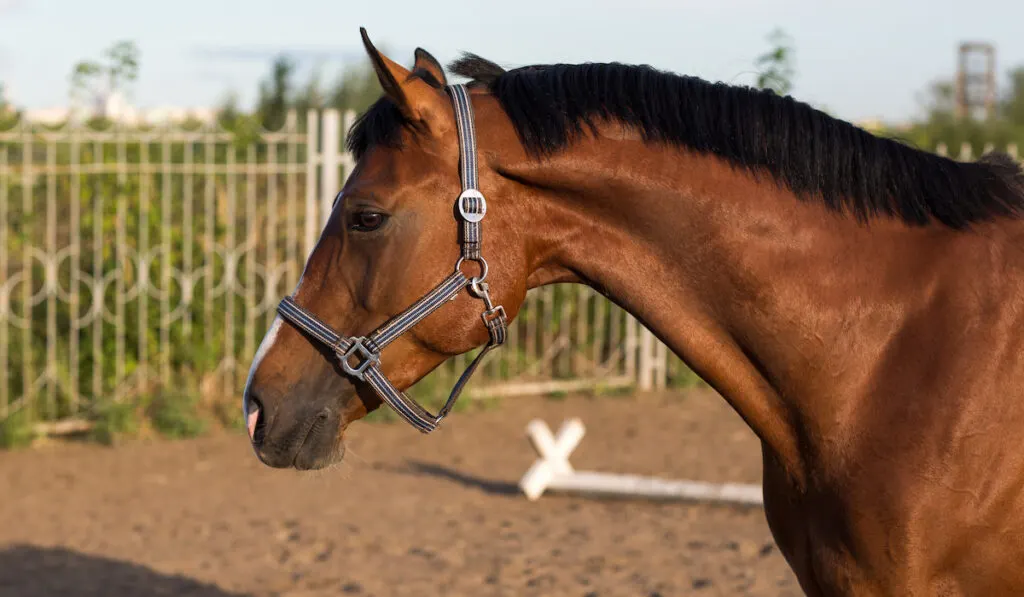
Table of Contents
Quick Summary
| Breed Name | Hanoverian |
| Other Names | Hannoveraner, Hannoverian |
| Personality | Spirited, easy-going, and strong-nerved. |
| Physique | Sturdy body with a long and noble neck, big expressive eyes, long ears, and large nostrils. |
| Traits | Athletic, energetic, calm, and eager to learn. |
| Height | 15–18 hands. |
| Weight | 1,300–1,533 lbs. |
| Colors | Bay, black, chestnut, and grey. |
| Health | Healthy, disease resistant. The only genetic disorder is Osteochondritis dissecans. |
| Lifespan | 25–30 years. |
| Ancestry | Mixed/Diverse |
| Type | Warmblood, sports horse, show horse. |
| Feeding/Diet | Forage, fresh hay, enriched concentrate, and in some cases, high-quality grain, vegetables, and fruits. |
| Availability | Common |
| Country of Origin | Germany |
| Registered Breed Association | Hannoveraner Verband |
Origin
The Hanoverian is a warm-blooded horse with a vibrant history dating back over 300 years that is well documented. This horse breed originated in the Lower Saxony Province in Germany.
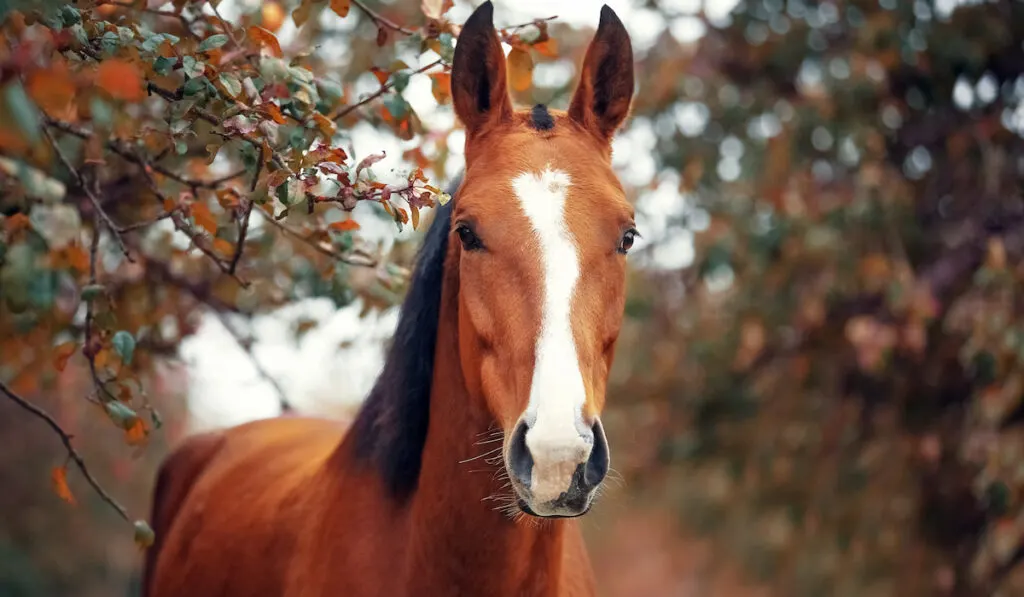
Alongside the Elector of Hanover, the King of England, George II, established the State Stud of Lower Saxony at Celle in 1735.
He refined indigenous mares with Holsteiner, Prussian, and Thoroughbreds, amongst others, aiming to breed all-purpose horses for agriculture and also as cavalry mounts.
Over the years, with the advent of automobiles and technology, the use of horses changed, and with it, the breeder’s criteria for crossbreeding.
The desire to make them a more athletic breed led to the introduction of Thoroughbred and Trakehner bloodlines into the Hanoverian line.
These refining techniques were successful, and the modern-day Hanoverian is much lighter than its ancestors.
It is suitable for leisure riding, show hunting, show jumping, dressage, and eventing.
In 1888, the Hanoverian Studbook was established, and the breeders’ association founded the Hannoveraner Verband in Germany in 1922.
Today, there are over 16,000 registered Hanoverian horses locally and internationally, and the Hanoverian breed has been mentioned in more than a few ancestry lines.
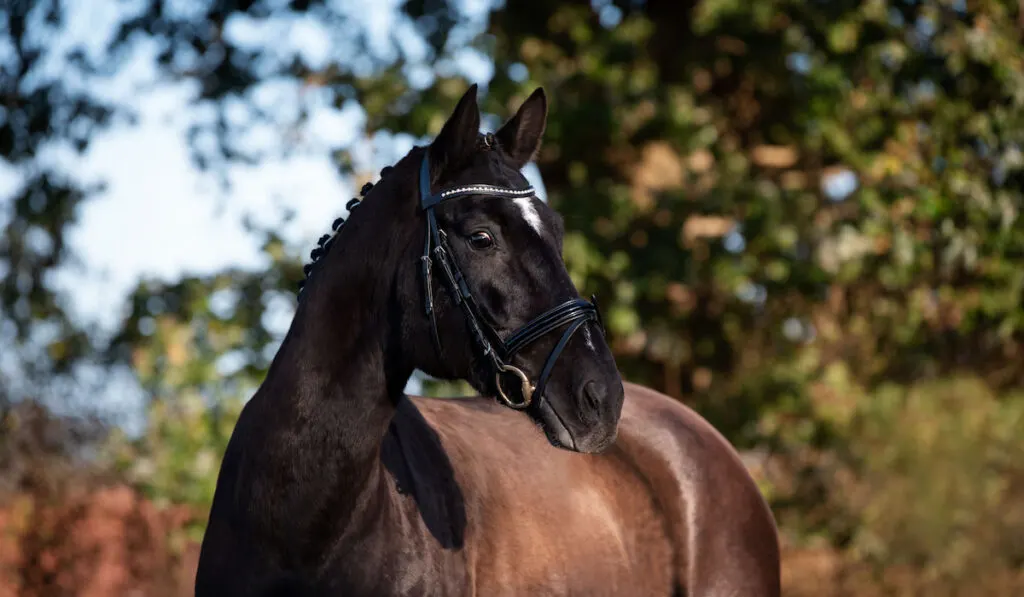
Breed Characteristics
Hanoverians are a noble, athletic, graceful, and powerful breed. They are also robust. They have open, expressive eyes, long ears, and large nostrils, making for a distinguished-looking head.
Their gaits are graceful, elegant, and elastic, which can be credited to their powerful legs and hindquarters.
They have a strong back, a rectangular frame, and well-developed musculature.
They are famous for their ground-covering and elegant gait, making them very good at dressage and other equestrian sports.
Temperament
Hanoverians are energetic, spirited horses, but they are also calm, with nerves of steel. Their friendliness and well-balanced nature make them a top-of-the-bucket-list horse type.
Their courage and willingness to learn make them really good at whatever sport they are used for – the number of medals attached to the breed can attest to that fact.
They are also good listeners and obedient, making them a dream for beginners.
Weight and Height
Hanoverians vary in size and are suitable for all kinds of riders. They range between 15–18 hands in height and have an average weight of 1,433 lbs.
They are considered average in size, as they are not as light as light horse breeds or as heavy as some heavy breeds; simply in-between.
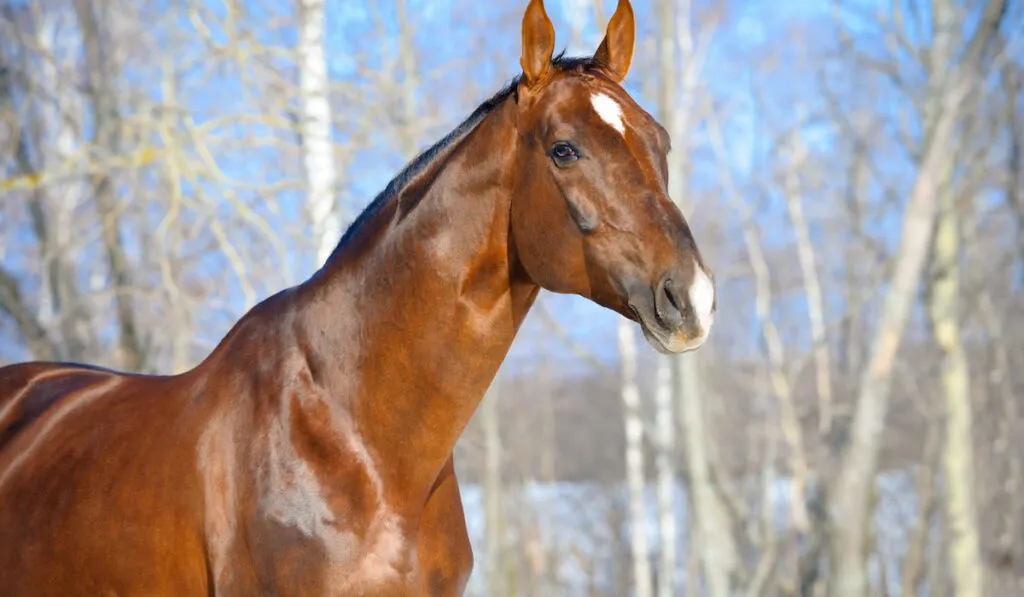
Conformation and Personality Traits of Hanoverian Horses
These incredible horses have noble heads with expressive eyes, large nostrils, and long pointy ears.
They also have long, sloping necks with strong and well-padded backs.
They have long, straight forearms but short cannons.
They have a rectangular frame with pronounced and long-reaching withers.
Hanoverian horses move with a floating trot, rhythmic canter, and a comfortable, steady walk that allows them to cover more ground with each step.
They have been bred over time to handle challenging and demanding situations well, and they do so efficiently.
Sturdy bone structure and incredible stamina due to their early days spent pulling carriages and doing military activities are among their performance attributes.
They are intelligent, willing to learn, brave, and have a great attitude toward work.
Lifespan
The average lifespan of a Hanoverian horse is between 25–30 years.
However, you must ensure that your horse gets proper care and nutrition to achieve this.
Routine medical checkups are also vital to ensure that diseases are prevented or caught early enough to be treated.
Colors
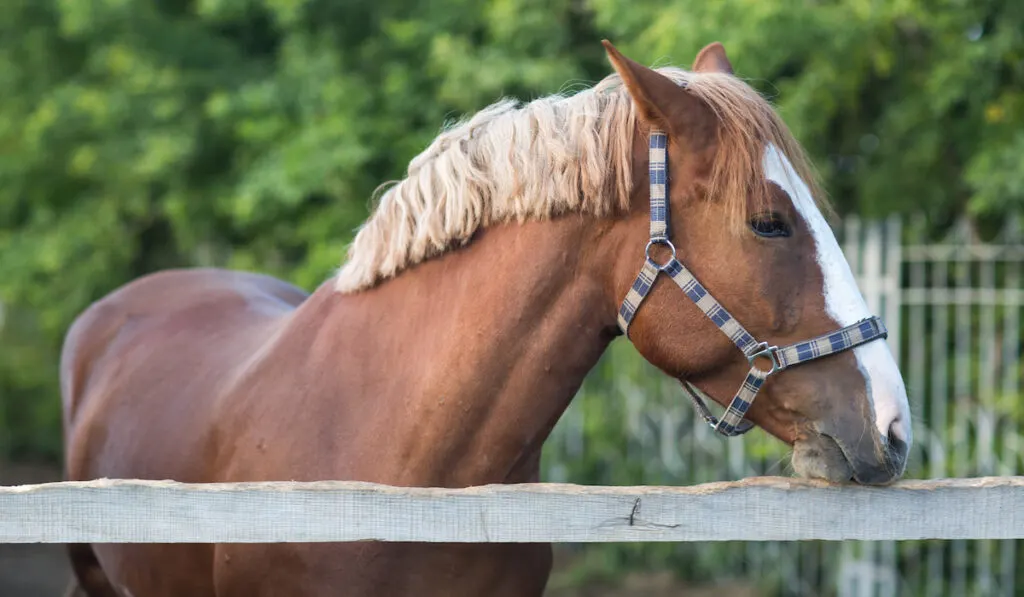
The accepted breed colors are regulated by the Hannoveraner Verband very strictly.
The registry does not recognize colors like palomino, buckskin, and cremello. Horses with too many small markings on the coat are also not considered Hanoverians.
The official colors are:
- Black
- Bay
- Grey
- Chestnut
Uses
Hanoverians are one of the most successful breeds in equestrian sports, especially in Olympic dressage, jumping, and eventing.
They are known for their graceful, light, relaxed, and ground-covering gaits, which make them very appealing to watch in dressage. They are also excellent jumpers.
They are also used as pleasure mounts, which they excel at too.
They have also succeeded at cross country, show hunting, and driving.
Breed Association: Regulations and Registration
The registration process for Hanoverian horses is strictly monitored and controlled.
The Hannoveraner Verband manages the Studbooks in Germany and the state stud in Celle.
The criteria for entering a foal, mare, or stallion into the books are based more on conformation than pedigree.
The selection process can be brutal, but it is what maintains the great legacy of the Hanoverian horse breed.
The American Hanoverian Society (AHS) organizes national inspection tours to register foals, and for them to be registered, both parents must be approved by the AHS.
When a foal is accepted into the register, it may be branded with an insignia of two horse heads forming an H on its left hindquarter. The German association no longer requires this identification, but associations in other countries may have branding criteria to enter their record books.
The last two digits of the horse’s birth year may also be branded under the insignia.
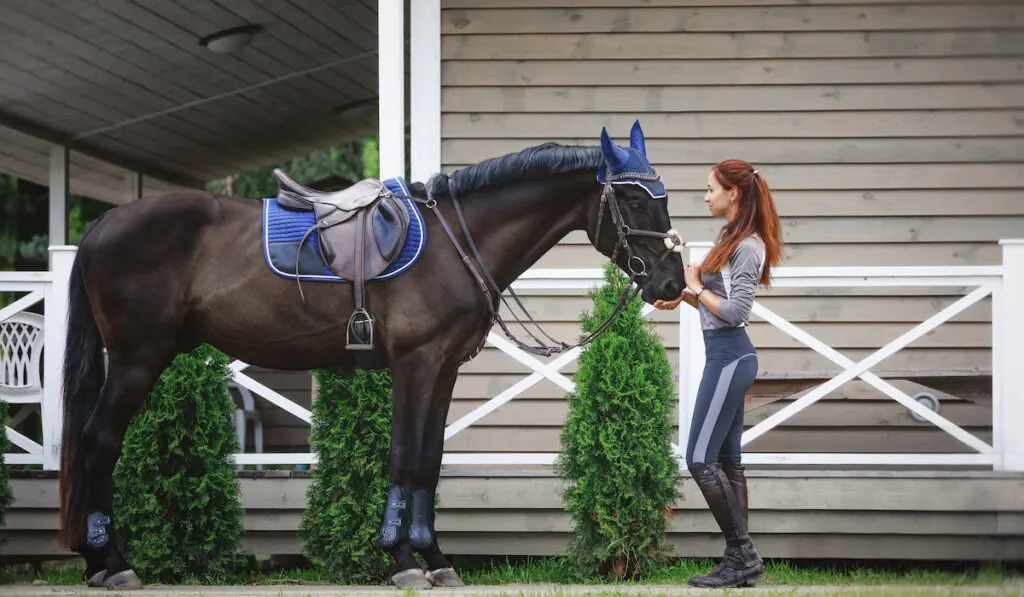
Hanoverian Horse Health Problems
For horses to be registered in the Hanoverian studbook, they have to undergo extensive and strict testing protocols.
This is done to prevent the continuation of heritable genetic defects. Because of this, the Hanoverian is one of the healthiest horse breeds.
However, Hanoverians can be affected by a congenital disease known as Osteochondritis dissecans – a condition where the cartilage and bones around a joint die and break loose due to poor blood supply.
On the bright side, the probability of the occurrence of this disease is low due to the strict protocols for testing and breeding.
Famous Hanoverian Horses
Hanoverian horses are acclaimed worldwide, and here are a few of the most famous Hanoverian horses that have contributed to the popularity of the breed.
Brentina:
Brentina is said to have been a beautiful chestnut horse.
Debbie McDonald rode her, and together they won many competitions and titles in the United States of America.
Salinero:
He was a stunning black Hanoverian.
Salinero had white markings on his head, feet, and nose.
He was born in 1994 and won various titles, including the Olympic Games and numerous international and national competitions alongside his Dutch rider, Anky van Grunswen.
Elvis:
Born in 1996, he was raised by Christian Pfeil in Bremerhaven.
Elvis went on to win the Olympic Games in Peking in 2009. Nadine Capellmann rode him.
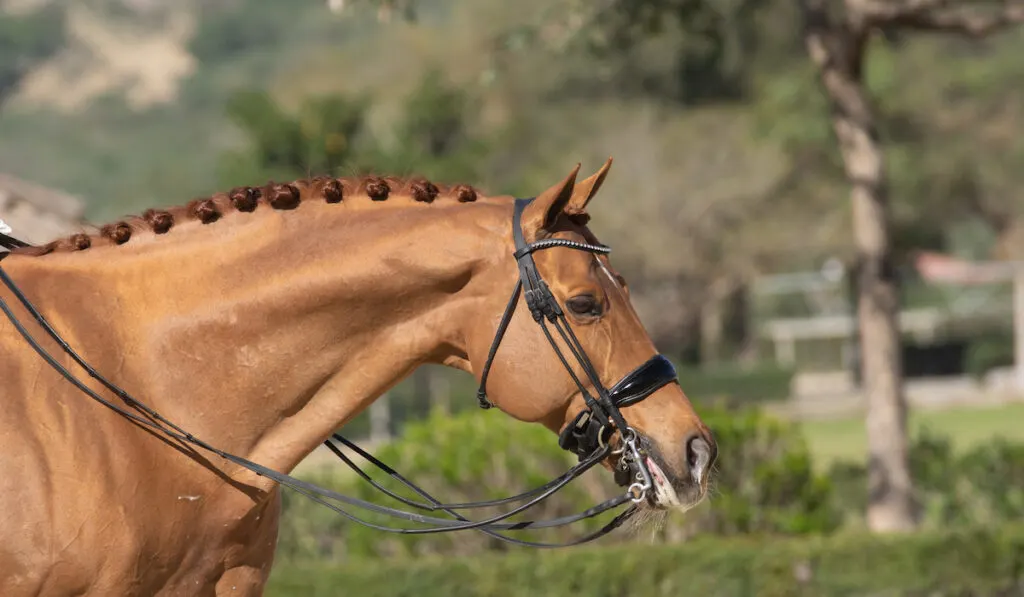
Hanoverian Horse Breed Facts
—The Hanoverian breed was created over 300 years ago, and all breed records are well-documented.
—The American Hanoverian Society was established in 1978 to ensure the continuance of the standard for selection as the American competitors started importing them.
—The registry only accepts solid-colored horses in the registry.
—Every registered Hanoverian has an “H” stylized by two horse heads branded on its left hindquarter.
—They are very pricey but definitely worth it.
—They have won over 25 Olympic Games.
—In 1985, the association for promoting Hanoverian horses was established, and they connect horses to sponsors and talented riders.
You can identify such horses by their name, which usually bears the suffix or prefix FRH.
—The average price range for a Hanoverian is between $7,500 and $15,000.
Final Thoughts
Hanoverian horses are one of the leading horse breeds in equestrian competitions, and although they are high-value horses, they deliver their money’s worth.
These fine horses are good-natured, intelligent, and loyal, which make for excellent partners in sports and incredible companions as pets.
Because of their friendly nature, they are suitable for beginners and experts alike, and they can be trusted to remain calm even when their rider isn’t.
Resources
- https://en.m.wikipedia.org/wiki/Hanoverian_horse
- https://pets.webmd.com/what-to-know-about-the-hanoverian-horse
- https://www.cavalluna.com/en/backstage-more/knowledge-about-horses/horse-breeds/hanoverian-horse
- https://imh.org/exhibits/past/breeds-of-the-world/europe/hanoverian
- https://horsesonly.com/hanoverian-horse
- https://www.animalfunfacts.net/pets/horses/702-hanoverian.html
- https://horse-canada.com/breeds/hanoverian/amp
- https://cowgirlmagazine.com/facts-hanoverian-horses
- https://horseracingsense.com/hanoverian-breed-jumping-horses/
- https://www.thevetexpert.com/hanoverian-horse-11-most-important-information-on-this-versatile-breed
- https://www.hamleys.com/schleich-hanoverian-foal
- https://hanoverian.org/brands/

